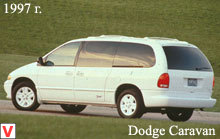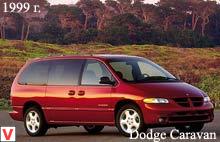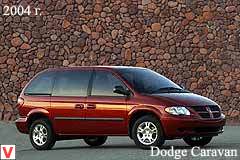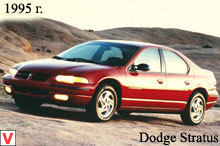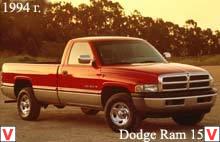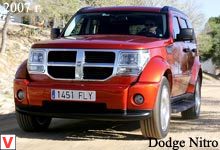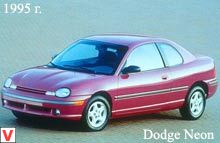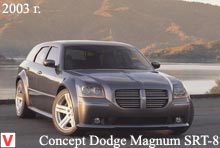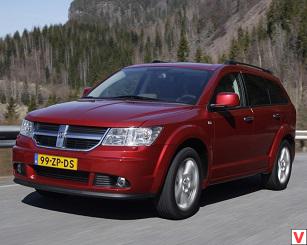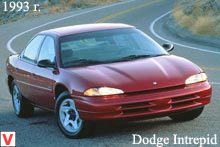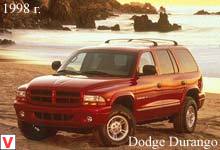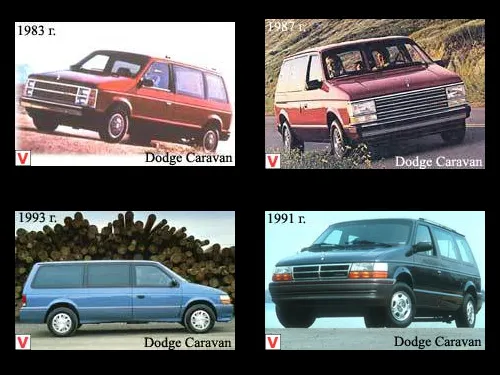
The first Dodge Caravan appeared in 1983 and immediately gained popularity, since it marked the beginning of an entirely new class of roomy family cars. For the sake of fans of different brands, the same car was sold under the names of Chrysler Voyager, Plymouth Voyager and Dodge Caravan. It was possible to distinguish them only by the brand nameplates, elements of the front part of the body (grille, bumpers) and some differences in the cabin. Americans immediately liked these very roomy minivans with low maintenance costs and excellent handling characteristics, which completely replaced the previously familiar full-sized station wagons like the Station Wagon.
In the role of the main driving force were two engines: a 2.5-liter injector "four" with a 150 hp turbocharger. and a 3.5-liter V6 rated at 141 hp. The latest engine became the most popular and, in fact, set the American standard for power units of minivans. In 1987, the car underwent a light restyling, which is most noticeable in the frontal light-optics (vertical headlights gave way to horizontal). In the same year, the model began to be supplied to the European market. The production car fully met almost all the requirements for family minivans, both in comfort and in terms of dynamic characteristics. Air conditioning, power windows and cup holders were mounted at first only on request.
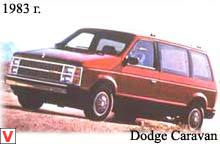
In March 1990, all models of the family were modernized, the body and chassis were significantly reworked, even the overall parameters (4525х1830х1680 mm) changed, the maximum amount of luggage increased to 3,250 liters. Body styles have become smoother and smoothed. A 3.3-liter, 164-horsepower V6 gasoline engine appeared on the Grand range with an extended wheelbase (4895x1830x1690 mm). It was used until 1994. The year 1991 was marked by the appearance of AWD all-wheel-drive modification with an independent rear axle with a De Dion type suspension connected via a viscous coupling.
In the same year, the 99-strong 4-cylinder engine was added to the line of power units, which became 15% more economical than the most wasteful in the range of the 3.0-liter V6 power unit, which consumes up to 17 l / 100 km on the highway. An economical 2.5-liter turbo diesel with a power of 118 hp, intended for the European market since June 1992, came to the fore. A very roomy cargo compartment predetermined the use of the Dodge Caravan not only as a family car, but also as a service or public transport.
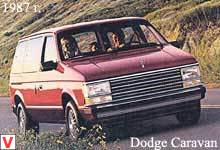
In 1995, the second-generation Dodge Caravan minivans entered the market. The sleek, sleek body of the Caravan, with a sloped hood and a strong inclination of the front struts, later became a role model. They produce two basic versions - with a short and long base, which differ in standard equipment and luggage compartment volume. The extended version received the prefix Grand. The main difference between the second-generation Caravan and its predecessor is the appearance of two side sliding doors, although there was also a version with a 4-door body in which the second door was missing from the driver’s side.
Wide doors provide convenient access to a spacious passenger cabin with three rows of seats. The second and third row seats are removable. They are quite heavy, but when dismantled, they can be transported on small wheels mounted. For the passengers of the second row, additional deflectors of the “stove” are displayed. Caravan is a vehicle that is best suited for long journeys by a large company. All is thought over to trifles.
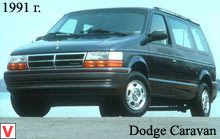
The lever of the selector of an automatic box in traditions of the American car industry is taken out on a steering column. Accordingly, go from the front to the rear seat can be, without leaving the cabin. There was a top version, equipped with a 3.8-liter gasoline engine and all-wheel drive. The third generation of the model, introduced in 2001, largely copies its predecessor. The same body, similar design. But with the disappearance of the Plymouth brand, only Dodge Caravan and Chrysler Voyager remained on the market. Gamma of power units includes gasoline engines of 2.4 (152 hp) and 3.3 liters (160 hp), as well as turbo diesel engines of 2.5 and 2.8 liters.
Dodge Caravan, which is sold in the US market, does not install turbo diesel, but it provides a more powerful 3.8-liter gasoline engine with 182 hp. In the line there are modifications both with 5-speed manual and 4-speed "Automatic". The version with 3.3- and 3.8-liter engines can be completed with AWD all-wheel drive transmission. The next upgrade touched Caravan in 2004. The updated minivan debuted at NAIAS in Detroit.
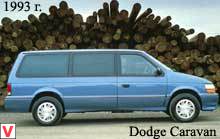
Two basic models are available: the Caravan with a wheelbase of 2878 mm and the Grand Caravan with a wheelbase of 3030. The main differences in the interior. This is a new lightweight transformation system for the Stow`n Go seat (loosely folded “easy”), due to which a passenger can fold any of the second and third row seats in seconds, forming a flat floor. Used a new seat filler, developed by NASA and guaranteeing the convenience of landing, even after many hours behind the wheel. Original coasters for the second row seats appeared, and innovative systems significantly eased entry into the third row of seats due to the instantaneous folding rightmost seat of the second row.
Gamma engines: 2.4 liters R4 16V (155 hp) - for the Caravan SE; 3.3 liters V6 12V (180 hp) - for the Caravan SXT and Grand Caravan SE and 3.8 liters V6 12V (215 hp) - for the Grand Caravan SXT.
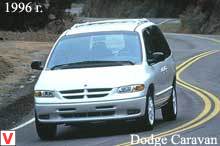
Other images auto Dodge Caravan
